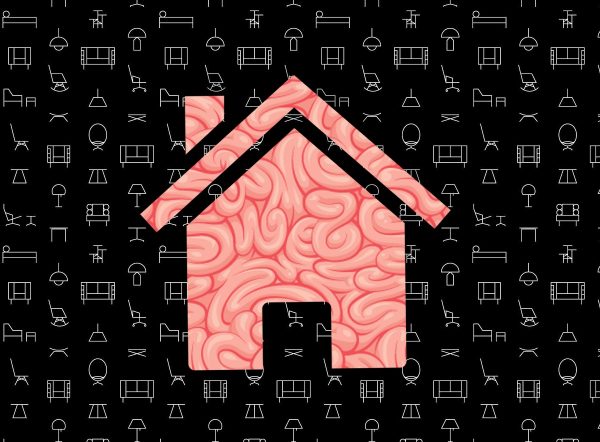Smart homes are becoming increasingly popular with tech-savvy and tech-adjacent households. What does a “smart” home entail, exactly? According to Google (an authority on all things “smart”), it is “a home equipped with lighting, heating, and electronic devices that can be controlled remotely by home or computer.” The world of smart has gone beyond the phone, and has entered most other facets of everyday life.
We understand that jumping into the world of smart products can be daunting and intimidating. A great starting point is determining what you want to smarten in your home. There are so many products these days, from the ubiquitous smartphone, to refrigerators and ovens with built-in smart functionality – it can be understandably overwhelming. We here at StorAmerica Self Storage will breakdown some of the more popular smart items that you can easily integrate into your home:
Speakers and Assistants
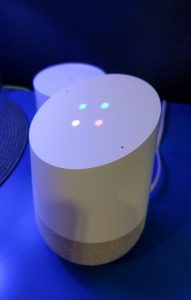
Smart speakers tend to be the centerpieces of any smart home, as they are essentially your home’s command center. They have even become household names, with Google Assistant and Home, Amazon Alexa and Echo, and to a lesser extent, Apple’s Siri and HomePod. Google’s and Amazon’s offerings even come in different sizes to fit your space and budget.
It is worth mentioning that physical smart home speakers are not entirely crucial to a smart home, as your smartphone’s assistant can serve the same purpose. But if you want equipment that provides a better microphone and more robust sound quality, a smart speaker is the way to go, especially if you don’t want to worry about having your phone on you at all times.
Televisions

Smart TVs are quickly becoming the norm. 4k TVs (the new standard, which greatly improves on the resolution of HDTVs) most likely come with smart features right out of the box, and some newer 720 and 1080 models may also boast smart features. This means the television or theater display has a means of connecting to your Wifi or internet, allowing you access to streaming services such as Netflix, Amazon Video, YouTube, and Hulu directly from the TV itself.
If you don’t want to replace your regular HDTV, don’t fret, you can convert it at relatively low cost. A media dongle or set-top box such as Google Chromecast, Amazon Fire TV, Apple TV, or Roku connects to your TV via HDMI and USB. Simply plug it into your TV, pair it with your Wi-Fi, and you have yourself a smart TV!
Lighting
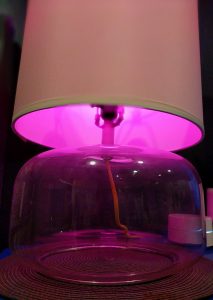
Yes, something as simple as a lightbulb is now considered “smart.” Smart lights have many great benefits over traditional bulbs, allowing for increased security, convenience, efficiency, and cool-factor. Imagine having to work a long night of overtime to meet a deadline, and you’re racked with guilt because your pets are sitting alone at home in the dark. Another common example – you’re on vacation and are worried about security while you’re away. With smart lights, you can activate your lights remotely via your phone. Some lights allow you to schedule times throughout the day to turn on and off, and some can turn on before you even enter the door so you’re not fumbling around in the dark.
One really cool feature of higher-end bulbs is the ability to change colors via a phone app, which allow you to set the mood for movie night, date night, etc. Well-known brands include Philips Hue, LIFX, Kasa by TP-Link, Ilumi, and Eufy by Anker. Some smart lights require additional hardware, such as Philips Hue, whereas other lights connect directly to you WiFi network without the need for hardware. If you prefer to integrate your existing ceiling lights into a smart home, a great way to do that is to install smart switches, which would replace your old, wall-mounted light switches, and enable them to be controlled via app or voice commands.
Thermostats
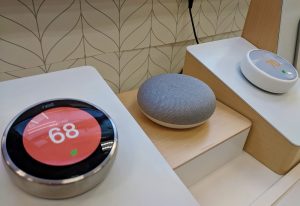
A big trend in the smart home arena is the smart thermostat. This more stylish counterpart to the boring, blocky thermostats we all know offers more than just an upgrade in the looks department. Smart thermostats go beyond just maintaining temperature, as they can sense temperatures in individual rooms to adjust accordingly (using optional sensors), learn your thermostat use and adapt to your daily routines, and by using motion sensors and your phone’s GPS, it can regulate itself when you aren’t home to maximize efficiency.
This all translates to savings in your heating and cooling costs, and lessening your footprint on the environment. The biggest players on the scene are Nest and Ecobee, although more established manufacturers like Honeywell have recently stepped into the smart arena.
Home Security Systems
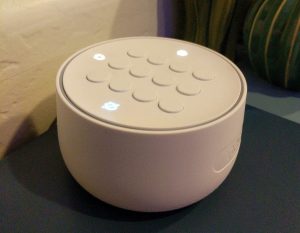
Home security systems have often been considered an upper-class luxury. They’re expensive and often require professional installation, putting them out of reach for many consumers, on top of that, coming with monthly monitoring fees. Not to mention, security systems are typically out of the question for most renters. But these days, you can pick one up right off the shelf and install it yourself. Smart security systems provide a huge benefit over traditional security systems, which is the ability to monitor your home remotely with your phone. You can get notifications in real time when there’s activity in or near your home. You can choose to monitor your system yourself, or optionally pay for a professional monitoring subscription. Popular brands include Nest Secure, Ring Alarm, Abode, Arlo, SimpliSafe, and SmartThings by Samsung.
Additionally, these home security systems are modular, so you can piece together only the items you want or need. These other smart items include video cameras, door locks, doorbells, smoke and carbon monoxide detectors, flood sensors, and broken glass sensors. The more items you integrate, the more fortified your home will be. Another plus – If you move, you can easily take your security system with you!
Plugs and Outlets
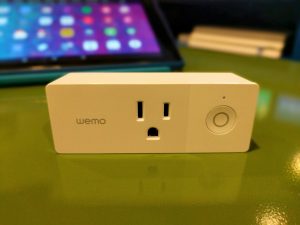
If you’re not into purchasing brand new items to start your smart home, a great alternative is to purchase smart plugs or outlets. This way, you can convert your existing fixtures or equipment for smart home compatibility. All you need to do is install the app, plug the smart plug into an open outlet, connect to your WiFi network, and plug your equipment into the smart plug. Wemo by Belkin, Kasa by TP-Link, and Eufy by Anker, are common smart plug brands.
You can theoretically plug any device into a smart plug if it fits the voltage requirements. Lamps, free standing air conditioners, humidifiers, coffee makers, and fans are all great candidates for the smart treatment. Most plugs come with auto-shut off features for safety and efficiency, and what’s more convenient than being able to turn your devices on or off hands-free, or when you’re away from home?

Now that we’ve established the basics of a smart home, another thing to note is that many of the above-listed items can be integrated with each other. For example, Google Home can be integrated with an Arlo Security system, and the Ecobee Thermostat can be integrated with Amazon Alexa. Cross-compatibility is not universal, however, so it’s best to do your research to verify that the components you want to integrate into your smart home will be able to communicate with each other. This is not a requirement, but if you want to combine multiple, non-compatible components, just be prepared to juggle multiple apps.
On top of all this, the IFTTT app (which stands for If This Then That) can open nearly infinite doors to how your devices function. By setting specific conditions, IFTTT can get your devices to work in tandem with your apps to accomplish some weird and amazing things. For example, you can trigger a truly useful integration, such as having your porch lights turn on automatically when your Uber driver arrives to your home.
You may be thinking this all sounds a little scary, and that’s understandable. There’s a reason why the robot takeover trope is used so frequently in science fiction. What’s to stop artificial intelligence from becoming sentient and eventually overthrowing humans, a la Skynet from The Terminator? Honestly, not much. So at the end of the day, fighting the predestined fate of mankind is futile. If you can’t beat ‘em, join ‘em!
Friend us on Facebook
Follow us on Google
Follow us on Twitter
Follow us on Instagram
Follow us on Pinterest
